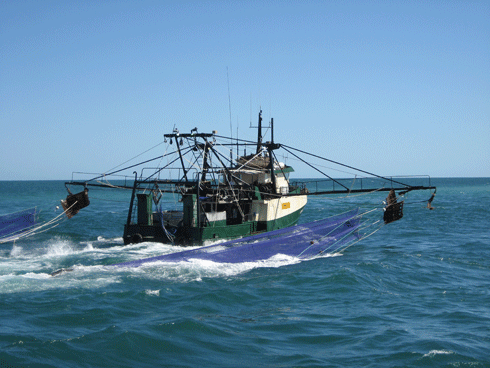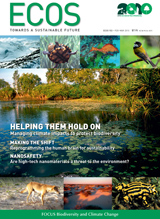
|
Published:
Theory meets reality in Northern Prawn Fishery
According to a case study of Australia’s Northern Prawn Fishery (NPF) there is a large gap between theory and practice when it comes to achieving the major goal of many of the world’s leading commercial fisheries – maximum economic yield (MEY).

|
|
Australia’s Northern Prawn Fishery is internationally recognised as a leader in marine fishery management. Credit: Austral Fisheries
|
Conducted by CSIRO’s Wealth from Oceans Flagship, the Australian National University (ANU) and the University of Washington, the study found that sustainable fisheries management relies on four factors: information, a clear social grouping, strong institutional arrangements and appropriate incentives.
According to a paper on the study’s findings published in the Proceedings of the National Academy of Sciences, ‘a dose of reality’ was an equally critical factor.
The $74.1 million NPF – which was recently identified by the United Nations as a global model for sustainable fisheries management – produces banana prawns and tiger prawns from a fishing ground extending from Weipa in far north Queensland to Cape Londonderry in northern Western Australia.
One of the paper’s lead authors, CSIRO scientist Dr Cathy Dichmont, says the NPF is among the first major fisheries in the world to fully embrace both economic efficiency and environmental sustainability in an operational management system.
‘Underpinning this is a bioeconomic model developed by CSIRO, the Australian Bureau of Agricultural and Resource Economics and ANU to set harvest levels in a way that joins industry profit with prawn biology so the fishery can be managed in real time,’ Dr Dichmont says.
‘What was known only in theory has now been applied to a “real life” situation.’
This required researchers to mathematically and statistically describe the growth and survival rates of the four main prawn species caught in the NPF, how they interacted with the fishing fleet and also how this influenced industry costs such as fuel consumption.
‘All this, while considering that costs, price and biology are dynamic in the short- to medium-term,’ Dr Dichmont says.
‘But a model is only a starting point for decision making. It isn’t a crystal ball that predicts exactly what will happen. Fisheries management is described as a “wicked problem” because interactions within and among the social, economic and ecological systems are highly complex, non-linear and, to a large degree, unknown. There is no one right answer that will solve the problem forever.’
She says the study made it clear that the participation of all relevant parties – fishers, boat owners, managers and scientists – is essential to ensure the model incorporates accurate data and as many viewpoints as possible.
‘Having all the stakeholders involved from the beginning also means they will understand the limitations of the model, as well as its value in adaptive management, allowing the partners to evaluate the outcomes from previous decisions and adjust subsequent actions accordingly.’
The CEO of NPF vessel operator Austral Fisheries, David Carter, says continuing collaboration between the industry, scientists and fishery managers should ensure the NPF’s future success.
‘Extensive research in the NPF has helped us address market downturns, over-fishing of tiger prawn stocks, and the environmental impacts of fishing,’ Mr Carter says.
Dr Dichmont says that NPF stakeholders were actively involved in determining which assumptions were to be applied in the modelling analyses.
‘The NPF experience moves us along the line of changing theory. There is a lot we can learn from it, which will help to identify how the approach can be adapted for, and applied to, other fisheries around the world,’ Dr Dichmont says.
‘One thing is clear, however: MEY won’t be achievable unless the fishery already has the four



